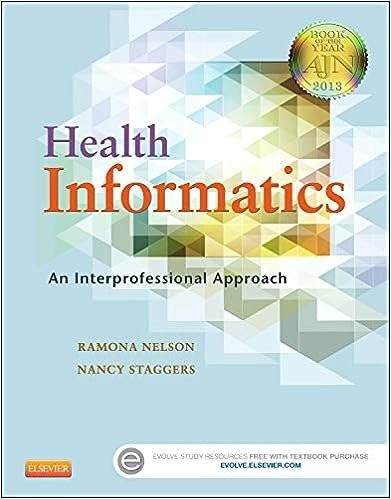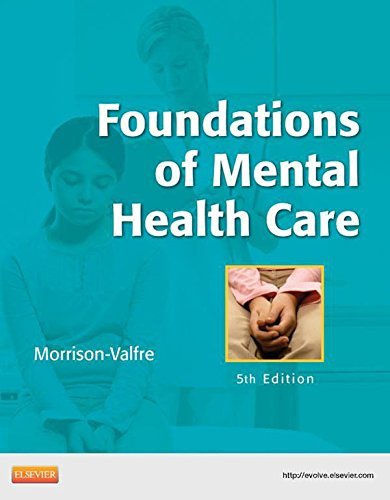Test Bank For Maternity and Women’s Health Care 12th Edition Lowdermilk
Chapter 06: Reproductive System Concerns
Lowdermilk: Maternity & Women’s Health Care, 12th Edition
MULTIPLE CHOICE
1. Which condition is the least likely cause of amenorrhea in a 17-year-old client?
a. Anatomic abnormalities
b. Type 1 diabetes mellitus
c. Obesity
d. Pregnancy
ANS: C
A moderately obese adolescent (20% to 30% above ideal weight) may have early onset
menstruation. Girls who regularly exercise before menarche can have delayed onset of
menstruation to age 18 years. Anatomic abnormalities are a possible cause of amenorrhea.
Type 1 diabetes mellitus is a possible cause of amenorrhea. Pregnancy is the most common
cause of amenorrhea.
PTS: 1 DIF: Cognitive Level: Remember
TOP: Nursing Process: Assessment
MSC: Client Needs: Health Promotion and Maintenance
2. When a nurse is counseling a woman experiencing primary dysmenorrhea, which
nonpharmacologic intervention might be recommended?
a. Increasing the intake of red meat to replace blood loss
b. Reducing the intake of diuretic foods, such as peaches and asparagus
c. Temporarily substituting physical activity for a sedentary lifestyle
d. Using a heating pad on the abdomen to relieve cramping
ANS: D
Heat minimizes cramping by increasing vasodilation and muscle relaxation and minimizing
uterine ischemia. Dietary changes such as a low-fat vegetarian diet may be recommended
for women experiencing dysmenorrhea. Increasing the intake of diuretics, including natural
diuretics such as asparagus, cranberry juice, peaches, parsley, and watermelon, may help
ease the symptoms associated with dysmenorrhea. Exercise has been found to help relieve
menstrual discomfort through increased vasodilation and subsequent decreased ischemia.
PTS: 1 DIF: Cognitive Level: Applying
TOP: Nursing Process: Planning MSC: Client Needs: Physiologic Integrity
3. Nafarelin is used to treat mild-to-severe endometriosis. What instruction or information
should the nurse provide to a client regarding nafarelin administration?
a. Nafarelin stimulates the secretion of gonadotropin-releasing hormone (GnRH),
thereby stimulating ovarian activity.
b. It should be administered by intramuscular (IM) injection.
c. Nafarelin should be administered by a subcutaneous implant.
d. It can cause the client to experience some hot flashes and vaginal dryness.
ANS: D
Nafarelin is a GnRH agonist, and its side effects are similar to those of menopause. The
hypoestrogenism effect results in hot flashes and vaginal dryness. Nafarelin is a GnRH
agonist that suppresses the secretion of GnRH. Nafarelin is administered twice daily by
nasal spray and can be intranasally administered. Leuprolide is given once per month by IM
injection. Goserelin is administered by subcutaneous implant.
PTS: 1 DIF: Cognitive Level: Apply
TOP: Nursing Process: Planning
MSC: Client Needs: Health Promotion and Maintenance
4. While interviewing a 31-year-old woman before her routine gynecologic examination, the
nurse collects data about the client’s recent menstrual cycles. Which statement by the client
should prompt the nurse to collect further information?
a. “My menstrual flow lasts 5 to 6 days.”
b. “My flow is very heavy.”
c. “I have had a small amount of spotting midway between my periods for the past 2
months.”
d. “The length of my menstrual cycles varies from 26 to 29 days.”
ANS: B
Menorrhagia is defined as excessive menstrual bleeding, either in duration or in amount.
Heavy bleeding can have many causes. The amount of bleeding and its effect on daily
activities should be evaluated. A menstrual flow that lasts 5 to 6 days is a normal finding.
Mittlestaining, a small amount of bleeding or spotting that occurs at the time of ovulation
(14 days before the onset of the next menses), is considered normal. During her reproductive
years, a woman may have physiologic variations in her menstrual cycle. Variations in the
length of a menstrual cycle are considered normal.
PTS: 1 DIF: Cognitive Level: Analyzing
TOP: Nursing Process: Assessment
MSC: Client Needs: Health Promotion and Maintenance
5. A 21-year-old client reports experiencing severe pain immediately after the commencement
of her menses. Which gynecologic condition is the most likely cause of this client’s
presenting symptoms?
a. Primary dysmenorrhea
b. Secondary dysmenorrhea
c. Dyspareunia
d. Endometriosis
ANS: A
Primary dysmenorrhea, or pain during or shortly before menstruation, has a biochemical
basis and arises from the release of prostaglandins with menses. Secondary dysmenorrhea
develops after the age of 25 years and is usually associated with a pelvic pathologic
condition. Dyspareunia, or painful intercourse, is commonly associated with endometriosis.
Endometriosis is characterized by endometrial glands and stoma outside of the uterus.
PTS: 1 DIF: Cognitive Level: Analyzing
TOP: Nursing Process: Assessment
MSC: Client Needs: Health Promotion and Maintenance
6. Which symptom described by a client is characteristic of premenstrual syndrome (PMS)?
a. “I feel irritable and moody a week before my period is supposed to start.”
b. “I have lower abdominal pain beginning on the third day of my menstrual period.”
c. “I have nausea and headaches after my period starts, and they last 2 to 3 days.”
d. “I have abdominal bloating and breast pain after a couple days of my period.”
ANS: A
PMS is a cluster of physical, psychologic, and behavioral symptoms that begin in the luteal
phase of the menstrual cycle and resolve within a couple of days of the onset of menses.
Complaints of lower abdominal pain, nausea and headaches, and abdominal bloating all are
associated with PMS; however, the timing reflected is inaccurate.
PTS: 1 DIF: Cognitive Level: Apply
TOP: Nursing Process: Assessment MSC: Client Needs: Psychosocial Integrity
7. A client reports experiencing severe abdominal and pelvic pain around the time of
menstruation. This pain has become progressively worse over the last 5 years. She also
experiences pain during intercourse and has tried unsuccessfully to become pregnant for the
past 18 months. To which condition are these symptoms most likely related?
a. Endometriosis
b. Premenstrual Syndrome (PMS)
c. Primary dysmenorrhea
d. Secondary dysmenorrhea
ANS: A
Symptoms of endometriosis can change over time and may not reflect the extent of the
disease. Major symptoms include dysmenorrhea and deep pelvic dyspareunia (painful
intercourse). Impaired fertility may result from adhesions caused by endometriosis.
Although endometriosis may be associated with secondary dysmenorrhea, it is not a cause
of primary dysmenorrhea or PMS. In addition, this woman is reporting symptoms of
dyspareunia and infertility, which are associated with endometriosis, not with PMS or
primary or secondary dysmenorrhea.
PTS: 1 DIF: Cognitive Level: Analyzing
TOP: Nursing Process: Assessment
MSC: Client Needs: Health Promotion and Maintenance
8. A perimenopausal client has arrived for her annual gynecologic examination. Which
preexisting condition would be extremely important for the nurse to identify during a
discussion regarding the risks and benefits of hormone therapy?
a. Breast cancer
b. Vaginal and urinary tract atrophy
c. Osteoporosis
d. Arteriosclerosis
ANS: A
Women with a high risk for breast cancer should be counseled against using estrogen
replacement therapy (ERT). Estrogen prevents the atrophy of vaginal and urinary tract tissue
and protects against the development of osteoporosis. Estrogen also has a favorable effect
on circulating lipids, reducing low-density lipoprotein (LDL) and total cholesterol levels and
increasing high-density lipoprotein (HDL) levels. It also has a direct antiatherosclerotic
effect on the arteries.
PTS: 1 DIF: Cognitive Level: Apply
TOP: Nursing Process: Planning MSC: Client Needs: Physiologic Integrity
9. Which statement regarding abnormal uterine bleeding (AUB) is most accurate?
a. AUB is most commonly caused by anovulation.
b. AUB most often occurs in middle age.
c. The diagnosis of AUB should be the first consideration for abnormal menstrual
bleeding.
d. Steroids are the most effective medical treatment for AUB.
ANS: A
Anovulation may occur because of hypothalamic dysfunction or polycystic ovary syndrome.
AUB most often occurs when the menstrual cycle is being established or when it draws to a
close at menopause. A diagnosis of AUB is made only after all other causes of abnormal
menstrual bleeding have been ruled out. The most effective medical treatment is oral or
intravenous estrogen.
PTS: 1 DIF: Cognitive Level: Remember
TOP: Nursing Process: Diagnosis
MSC: Client Needs: Health Promotion and Maintenance
10. The female athlete triad includes which common menstrual disorder?
a. Amenorrhea
b. Dysmenorrhea
c. Menorrhagia
d. Metrorrhagia
ANS: A
The interrelatedness of disordered eating, amenorrhea, and altered bone mineral density
have been described as the female athlete triad. Dysmenorrhea is painful menstruation that
begins 2 to 6 months after menarche. Menorrhagia is abnormally profuse or excessive
bleeding from the uterus. Metrorrhagia is bleeding between periods and can be caused by
progestin injections and implants.
PTS: 1 DIF: Cognitive Level: Understand
TOP: Nursing Process: Diagnosis
MSC: Client Needs: Health Promotion and Maintenance












Reviews
There are no reviews yet.